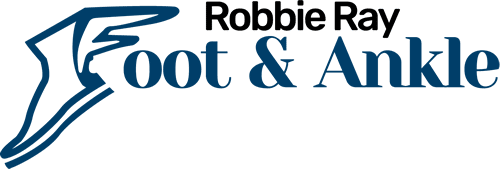Keyhole Bunion Surgery
What is a bunion?
Bunions are partially hereditary, partially shoe wear related problem where a painful, unsightly lump forms on the inside of the big toe and the toe itself starts to push against the other toe frequently causing deformities in these toes as well.

Why do bunions happen?
Although bunions occur in populations where people do not wear shoes such as Vietnamese jungle tribes they are much more common in modern shoe wearing populations with some studies suggesting anywhere between a third and half of all women will be affected by bunions over their lifetime. They also affect men but less frequently.
How can I treat a bunion?
Unfortunately, there are no proven non-surgical cures to reverse bunion deformities. However, to prevent bunions and stop them getting worse wearing wider shoes and lower heels can stop the problem progressing. There are non-surgical aids which can help make your shoes more comfortable and reduce bunion pain and I can arrange these for you in the clinic.

What does surgery involve?
If surgery is indicated, I do most bunion surgery through minimally invasive keyhole surgery. Most UK surgeons are not trained or familiar with this form of surgery but I am one of the few surgeons who has trained with Dr Peter Lam in Australia learning a 4th generation minimally invasive surgical technique known as “PECA”. This technique can offer success rates at least as high as the most successful open surgery with quicker recovery and less pain.
Scars after 12 weeks (there are 4 small scars on this picture):

Movement after 6 months:

I collect outcomes on all of my keyhole bunion surgeries and have a minor complication rate such as short term numbness and wound problems of around 5%. I have had no major complications or return to theatre so far. Most of my patients are extremely likely to recommend me to their friends and family for this operation.

I am currently writing up the largest series of minimally invasive surgery in the literature with over 300 cases and this gives me a very good idea of what problems can arise and how to mitigate them.
In 2012, NICE published guidance saying that minimally invasive bunion surgery is still very new and experimental. I believe it will soon be time to update this guidance as Dr Lam has published his results in a level 1 study and I am currently completing follow up of a large series of cases showing the safety and effectiveness of the surgery. Almost 95% of patients are very happy with the surgery. For the time being, it is important that we monitor the results of this technique. I will ask you to complete questionnaires as well as monitor your progress after surgery.
The procedure is done as a day case under general anaesthesia and pain numbing injections which are given after you are asleep.
I use a specialised tool called a burr, which is like a dentist’s drill is used to perform an “osteotomy” which is a controlled break of the bone so that the position can be changed. I remove the bunion and place the bone in a natural position so that the toe is straight.
I then set the bones at the time of surgery with 2-3 screws which allow complete stability and early walking. This is the big difference from the earlier techniques which did not hold the correction with screws and allowed the bones to set by themselves. I believe this allows for more stability and earlier walking and better correction than other types of keyhole surgery and many types of open surgery.


This is an example of keyhole surgery I performed on the left with previous open surgery by someone else on the right. Note that although the screws on the left are bigger, the cuts in the skin are much smaller. The whole operation is done through 4 small cuts usually between 3-5mm unlike traditional surgery where the incisions are generally over 70mm. The final result is also a much straighter toe.
Here some examples of my minimally invasive bunion corrections.
Mild bunion


Moderate bunion


Severe bunion


Aftercare
A bulky dressing will be applied in the operating theatre. You should be reasonably comfortable to walk around following your surgery in a stiff flat shoe which I will provide for you. I will see you 2 weeks following your surgery at which point we will review the wounds and trim the dissolving stitches. You will have to protect the position of the toe for 6 weeks using simple aids that I will provide for you, but you will be able to wear trainers and drive from around 2 weeks.
Risks and Complications
All surgery carries risks and complications. As such we will not embark on a surgical treatment pathway without discussing this in detail taking into account your own personal medical history and risk factors. For PECA keyhole surgery, common risks are scar pain and painful screws requiring removal. However, I now use specially made screws which have greatly reduced this problem.
